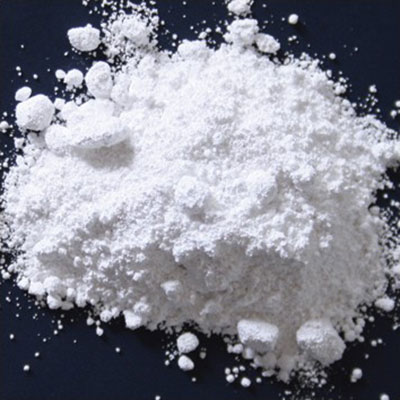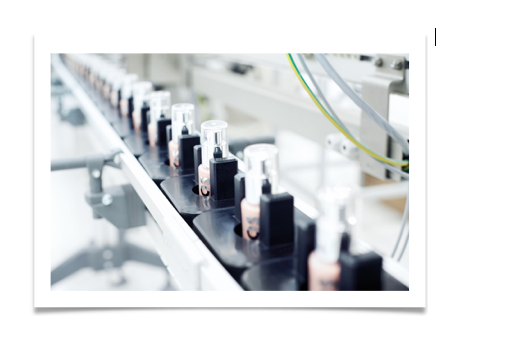TITANIUM DIOXIDE – Let’s review the situation:
TITANIUM DIOXIDE: What exactly is it?
Titanium Dioxide is a mineral which belongs to the iron oxide group. Titanium dioxide is used in the food industry (colouring), cosmetics (UV filters) and paint (for example for dye or pigments).In cosmetics, titanium dioxyde is generally used as a mineral filter as it is able to reflect, disperse and absorb ultraviolet (UV) rays. It is a component that is used in different cosmetic products (conventional OR organic), it is therefore also authorised by the different specifications in natural and organic cosmetics (BDIH, NaTrue, Ecocert, Cosmébio, Soil Association, ICEA, etc.). The use of titanium dioxide in natural and organic cosmetics is therefore quite widespread, since titanium dioxide is mainly used as a mineral filter in sunscreen products or as pigment in make-up products. It is one of the only alternatives (along with zinc oxide) to synthetic UV filters, most of which are highly controversial, classified as endocrine disruptors, etc.
The Benefits of Titanium Dioxide in sunscreens :
When it comes to sunscreens, titanium dioxide plays a key role in blocking harmful UV radiation, shielding our skin from potential harm. Unlike chemical UV filters, titanium dioxide creates a physical barrier on the skin’s surface, instantly reflecting sunlight away. This mineral is also considered safe for sensitive skin types, as it is less likely to cause irritation or allergies.
Titanium Dioxide : So what’s all the fuss about?
The distrust of the component comes from the fact that the International Agency for Cancer Research (IARC) has classified titanium dioxide as a potentially carcinogenic component (category 2B). As always, scientific studies must be interpreted in context and it is important not to generalise or draw hasty conclusions from them. Indeed, the IARC study suggests that titanium dioxide can present a carcinogenic risk in the form of dust inhaled by the lungs (in the air, in suspension). Therefore intensive inhalation of titanium dioxide as « loose powder » can be problematic and requires protective measures, especially for workers who are exposed to fine particles of the component. This problem of massive inhalation of fine particles, which can pose significant health problems, concerns not only this component, but also other components that are inhaled on a large scale in a professional context (coal, mineral wool, graphite, etc.)
Therefore, should all creams containing Titanium Dioxide be systematically avoided?
The application on the skin of creams containing titanium dioxide is not being questioned by this study, it is important to distinguish between the different contexts of use. There are also certain recommendations for sunscreen products which contain the ingredient in the form of sprays. Here too, it is important to differentiate; this is not a « titanium dioxide sunscreen spray », but a cream formulation in the form of a spray which also contains this mineral filter. Most titanium dioxides currently used in cosmetics have also undergone a surface treatment which consists of coating each oxide grain with layers of organic (polyols, esters, etc.) or inorganic (alumina, silica, etc.) compounds. This phase stabilises it, making it non-volatile and preventing its assimilation by the body.
And what about titanium dioxide as a food additive?
This is a topic related to the ingestion of titanium dioxide (as a food additive: E 171) in the form of nanoparticles, which can be problematic in the long term.The problem is the absorption of this component in the form of nanoparticles, in sweets, for example. One study by the INRA completed in 2017, focuses on titanium dioxide as a food additive E171/ (=nanoparticles), which is widely used in sweets, etc.
So, should all creams containing titanium dioxide be systematically avoided?
The application on the skin of creams containing titanium dioxide is not questioned by these studies, it is important to distinguish between the different contexts of use. There are also certain recommendations for sunscreen products which contain the component in the form of sprays. Here too, it is important to differentiate; this is not a « titanium dioxide sunscreen spray », but a cream formulation in the form of a spray which also contains this mineral filter. Most titanium dioxides currently used in cosmetics have also undergone a surface treatment which consists of coating each oxide grain with layers of organic (polyols, esters, etc.) or inorganic (alumina, silica, etc.) compounds. This phase stabilises it, making it non-volatile and preventing its assimilation by the body.
Are all sunscreen products (organic or conventional) which contain titanium dioxide concerned by this issue?
To summarise: the problem is the massive inhalation of titanium dioxide dust and its ingestion as a food additive, not simply its presence in a cream formulation.
What could also possibly be problematic is the presence of this component in the form of nanoparticles in creams, which is not an issue for healthy skin (EU NanoDerm* study), but other studies are looking at the effect that products containing nanoparticles could have on damaged skin, although according to the latest studies it would seem that the protective barrier remains intact and that the substances do not extend beyond the epidermis. To be continued…
But the presence of titanium dioxide in a cosmetic product does not mean « massive inhalation of fine dust », nor does it automatically mean that this component is present in the form of « nanoparticles ». Another more recent study in France ( COSMED APRIL 2021) confirms that titanium dioxide, as such, does not penetrate the skin barrier.
*******
However, it is important to distinguish between the ingredient ingested in nanoparticles as a food additive, inhaled as « loose powder » (which is more relevant to the industrial sector), the ingredient used in the field of medicine, and the composant used as a mineral incorporated in creams or other cosmetics.
On the subject of nanoparticles in sunscreen products, you can also read the following article (in french)

credit : Unsplash_Antonio_Gabola
Finally, let’s look at another misconception. We often hear : » All organic sunscreen products contain « nanoparticles » of mineral filters.
Organic sunscreen products contain micronised mineral screens, (titanium dioxide and zinc oxide) sometimes coated, but micronised does not mean « nanoparticles ». Nanoparticles are defined as elements whose size are on a scale from 1 to 100 nm. Since 2013, the legislation states that components used in the form of « nanoparticles » must be declared with the symbol (Nano). The obligation to declare this on the packaging makes identification easier.
Mineral or chemical (synthetic) sunscreen filters
Just as a reminder: organic sunscreen products contain only mineral UV filters, conventional products contain mainly chemical synthetic UV filters or sometimes a combination of synthetic filters and mineral filters. As far as we know, after close examination of numerous sunscreen products, it is mainly mainstream brands which use mineral filters in nanoparticle form. We have only found a few certified organic brands where the presence of nanoparticles are indicated and they will almost certainly be required to review their formulas in accordance with the upcoming instructions regarding various specifications concerning natural and organic cosmetics. Just take a close look at the list of ingredients on the packaging, especially in the “conventional” product category with higher indexes of protection, which sometimes use a combination of synthetic UV filters and mineral filters in the form of nanoparticles. These micronised UV filters in nano form will be indicated in the INCI list, for example METHYLENE BIS-BENZOTRIAZOLYL TETRAMETHYLBUTYLPHENOL [nano] or Titanium Dioxide [nano].
Without getting into an intensive discussion on the issue of nanoparticles in cosmetics, it should be noted that the various specifications in natural and organic cosmetics (Cosmos, Natrue, Ecocert, BDIH, Soil Association, etc.) are in the process of ruling on the subject. The regulations on components evolve regularly, the risk assessment process is a continuous process which must be up to date with the evolution of the level of knowledge and recent scientific studies.

credit: unsplash_Josuah_Hoehne
As a broad summary concerning titanium dioxide
The problem is the massive inhalation of titanium dioxide dust, its ingestion as a food additive or in a toothpaste and not its mere presence in a cream formulation.
➡️ Another potential problem is the presence of this ingredient in toothpaste, lipgloss or lipstick, for example, since products applied to the mouth (or used to brush teeth) are partially ingested.
Other studies are examining the impact of nanoparticle-containing products on damaged skin, but the latest studies suggest that the protective barrier remains intact and that the substances do not penetrate beyond the epidermis. To be continued…
Alternative Options
If you still have reservations about using titanium dioxide, there are alternative sunscreen options available. Look for sunscreens that use zinc oxide as the primary UV filter. Zinc oxide provides similar broad-spectrum protection to titanium dioxide and is widely acknowledged as safe and effective.
To conclude
In the realm of cosmetics and skincare, titanium dioxide plays an important role in protecting our skin from harmful UV radiation. While concerns regarding health risks exist, regulated use in creams and sunscreens shows minimal danger. The decision to embrace or avoid titanium dioxide-containing products ultimately rests on personal preference and any specific concerns one might have. As with any skincare ingredient, knowledge is the key to making the right choices for our skin’s health and well-being.
More articles on cosmetics ingredients
****
The article dates from 2021, but will be updated regularly based on recent research.







 credit : Dr Bronner’s
credit : Dr Bronner’s

